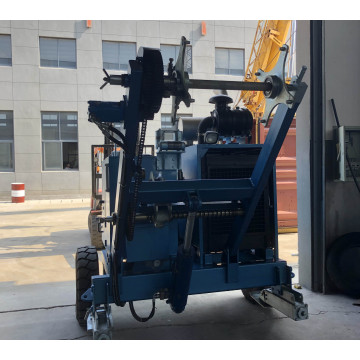Rubber roller production process rubber preparation
For rubber rollers, compounding is the most critical link. The types of rubber used in rubber rollers range from natural rubber and synthetic rubber up to more than 10 kinds of special materials, with a gel content of 25% to 85% and a hardness of 0 to 90 degrees, which spans a very large range. The conventional method is to use an open-type rubber mixer for mixing and processing in the form of a plurality of master batches. The so-called rubber mixing machine is a kind of rubber mixing machine that is used in the rubber factory to prepare mixed rubber or to hot-smelt, plasticate, and form the rubber. However, these are a kind of mixed plastic equipment. In recent years, companies have switched to more intermeshing mixers and made rubber compounds by sub-mixing.
After the rubber material is evenly mixed, the filter is used to remove the impurities in the compound. Then use a calender, an extruder, and a laminator to make a film or stripe without bubbles and impurities for molding the roller. Prior to molding, these films and strips are subjected to rigorous visual inspections and fresh surfaces are kept from blocking and squeezing. The rubber on the surface of the film and rubber strip must be free from impurities and air bubbles, otherwise blisters may occur when the surface is ground after vulcanization.
Roll forming of rubber roll manufacturing process
Roller molding is mainly used to paste coating rubber on metal cores. Common methods include wrapping, extrusion, molding, injection and injection. At present, most domestic companies mainly rely on mechanical or hand-adhesive molding, and most foreign companies have already achieved mechanical automation. Large and medium-sized manufacturing companies basically adopt profiling extrusion methods, which are produced by continuous extrusion molding of extruded film or continuous winding and molding of extruded tape. At the same time, in the molding process, the size and appearance of the machine are automatically controlled by a microcomputer, and some of them can also be formed by a right angle and special extrusion method of the extruder.

The use of profile extrusion and automatic computer-controlled molding methods can eliminate possible air bubbles and also minimize labor intensity. In the process of molding by the sticking method, in order to prevent the rubber roll from being deformed in the vulcanization and prevent the generation of air bubbles and sponges, a flexible pressurization method is also adopted outside. Generally, several layers of cotton or nylon cloth are wrapped around the outer surface of the rubber roller, and fixed and pressed with steel wire or fiber rope.
For small and micro-rubbers, various manufacturing processes such as manual patching, extrusion nesting, injection molding, injection and casting can be used. In order to increase production efficiency, moulding methods are now mostly used, and the accuracy is much higher than that of non-molding methods. Solid rubber injection, injection and liquid rubber casting have become the most important production methods.











